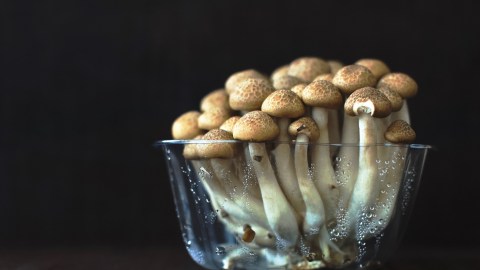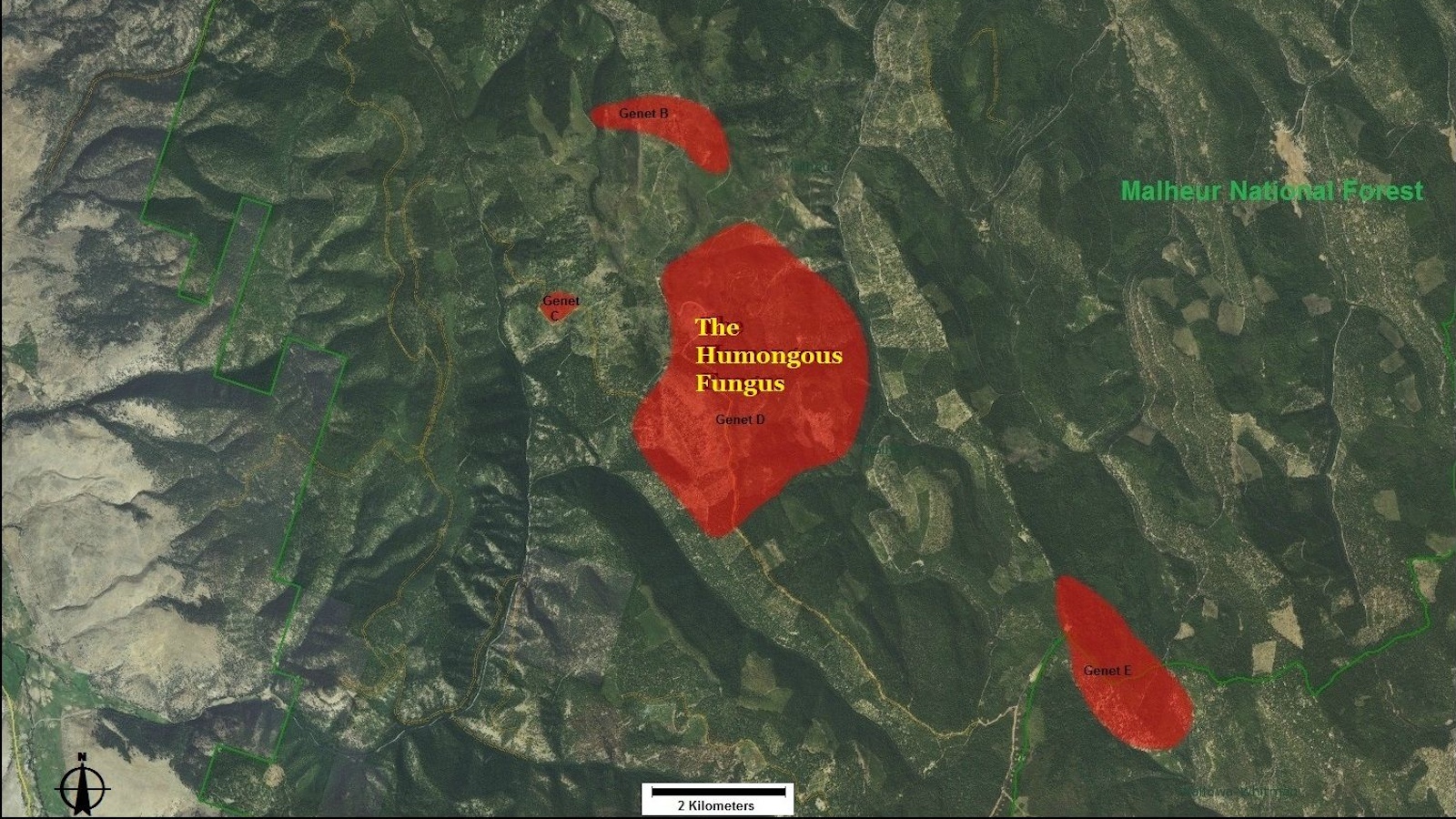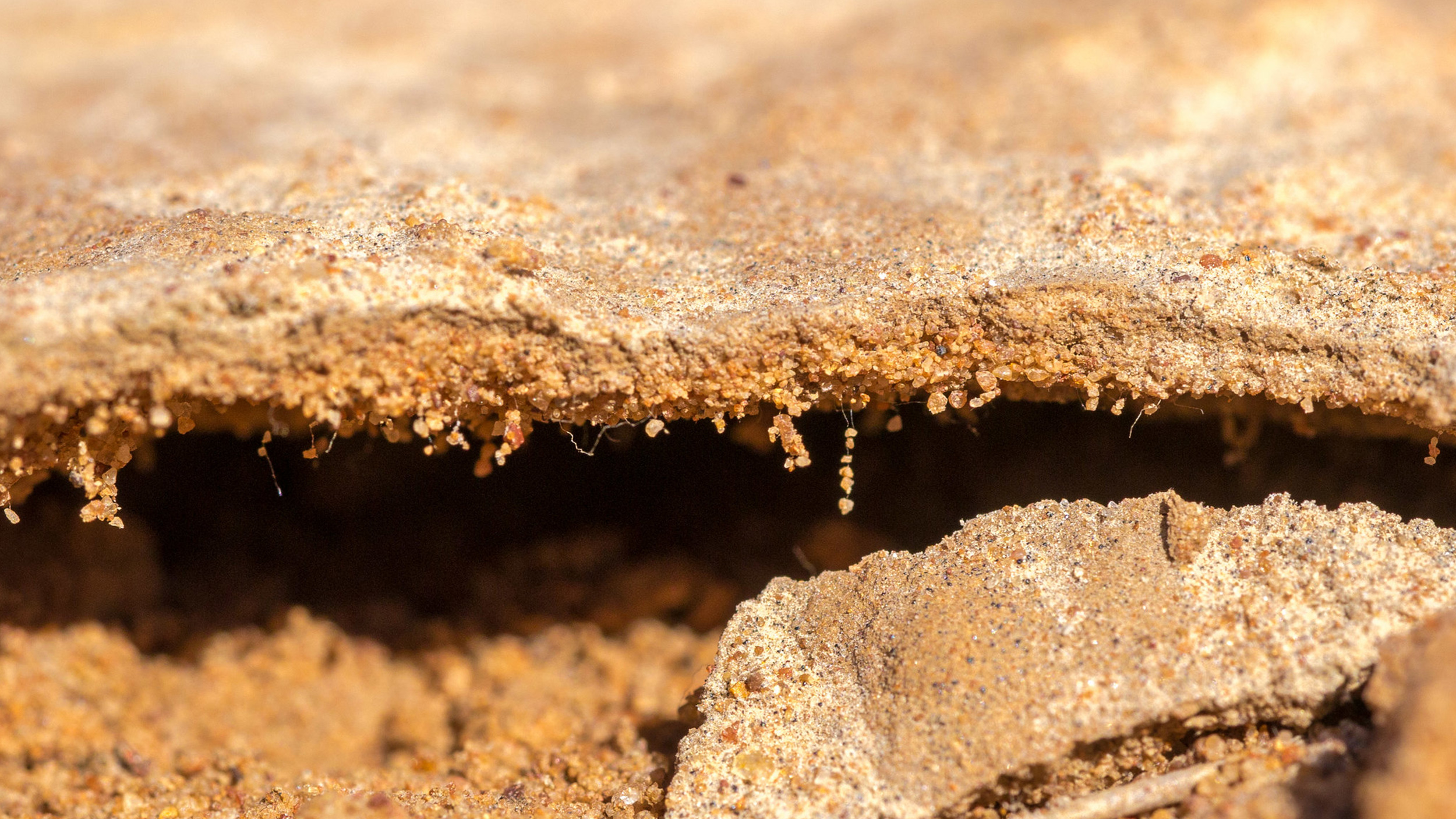The magic of mushrooms: A mycological trip

Photo by Mari-Liis Link on Unsplash
The unmatched biologist-reporter Tomasz Sitarz interviews his fungal namesake, maślak sitarz – known in English as the Jersey cow mushroom.
The humble fungus turned out to be quite a sage and agreed to share a few pieces of invaluable advice with the Homo sapiens species.
In the summer, I went camping with my friends. On the first day after our arrival, I woke up early to take a walk and pick some chanterelles for breakfast. As bad luck would have it, however, I left my glasses in the tent, and without them, I struggle to tell mushrooms apart. Still, I resolved to carry on, and having collected a handful of becapped specimens I returned to our camp.
My friends, still fast asleep, did not take me up on my breakfast offer, so I ate my tofu and mushroom scramble alone. And seeing the effect it had on me, I quickly realized I had accidentally collected some mushrooms from the Psilocybe genus. This little mishap was a surprise, but I didn’t let it throw me off balance – I let the psilocybinous song carry me away. And now, I shall report on the places I visited and the things I saw. If I find the right words, that is.
The ground began to rumble, or maybe rather stir and writhe, as if there was a gargantuan snakelike creature breathing underneath its surface. A low murmur and chemiluminescent glow seeped from between patches of moss and foliage. Greenish tentacles glimmered in the murky ground, twisting and turning, and showed me the way towards the heart of the forest. I recognized those viridescent threads to be mycelium, made of the hyphae that are the basis of fungi’s organization system, whereas the glow seemed to be caused by luciferins – a protein capable of emitting light as the result of an enzymatic reaction. Once this mycological phenomenon dawned on me, I was no longer anxious and walked ahead.
As I was forcing my way through the thicket, in my mind I tried to systematize all the information about fungi I have learned. They are a kingdom that belongs to the group of eukaryotes, which encompasses all cellular organisms that pack their genetic material into chromosomes kept in their cells’ nuclei. This makes them quite similar to humans, which convinced me even more that I could trust the call that beckoned me forward, especially since those organisms boast ancient evolutionary history. The oldest fossils that have been identified as remnants of fungi are estimated to be around one billion years old, which indisputably proves the primaeval nature of the wisdom that summoned me.
With every step that brought me closer to the heart of the land, I could hear the commotion of heated dispute grow louder around me. Then I remembered a certain theory linking the consumption of hallucinogenic mushrooms by the ancestors of contemporary humans with the development of our consciousness. If not for the phenomenon of synaesthesia, the meaning of the conversations I heard would surely have been lost on me. After all, fungal communication happens noiselessly, with the aid of chemical substances that flow through the mycelium. Luckily, I could feel the vibrations of the ground and electromagnetic impulses, catching even the tiniest of signal molecules so that I understood everything that was being said.
I finally arrived at an arena shaped like an ascocarp, the fruiting body of the sac fungi. In the stalls sat tens of thousands of various species of fungi, with the elders occupying the seats at the top of the assembly hall, chaired by the Hatter who looked strikingly similar to the well-known and liked Jersey cow mushroom.
Silencing the crowd, he announced:
“Welcome, human, son of mycelium.”
“Greetings to you, my brothers,” I answered kindly, filled with a feeling of unity with all the organisms that surrounded me.
“Your current state is no accident. You have been chosen from all the Homo sapiens to help us solve the most pressing problems of the modern world. Are you ready to serve our cause?”
“If you’re talking about the same problems that gnaw at my mind every day, I will be happy to help,” I said to him, but felt that I had addressed each and every fungus individually, as they were an inseparable entity.
“We know your thoughts, but it might be more anthropomorphic-friendly to allow you to express your worries about the state of the world verbally. As a kingdom of sage species, we have decided to try and save our shared motherland. The only one we all have.”
“It would be very helpful if I did a quick recap of what we know about you. Please, don’t get me wrong. In my current state, nothing is certain, and such a historic exchange deserves to be fully comprehended by both sides.”
“We know what you mean. And we would very much like to know what you, humans, think of us exactly.”
“As far as I’m aware, you were classified as plants for a long time. Your ability to move is far from impressive, and you seem to be well-rooted in the soil. Even mycelium is deceptively similar to plant roots. What is it that makes you different from other kingdoms of the living world?”
“Actually, some of us can move at a rather speedy pace, and several characteristics differentiate us from plants. First, we have no tissue. Our bodies are made entirely of thickly weaved mycelium. Also, we are heterotrophs, meaning that we absorb nutrition from other organisms, namely decomposing organic matter. Of course, we help it decompose through releasing our digestive enzymes into the environment. This ability makes us the main cleaners of the natural world. We can also feed parasitically, hunt, and cooperate with autotrophic organisms.”
“But you are not only what you eat?”
“We are also different from other organisms on a biochemical level. We have our cell walls just like plants do, and they serve the same purpose – to protect the inside of the cell. Interestingly, however, the main ingredient of our walls is not cellulose, as it happens for plants, but chitin, a polysaccharide also found in the exoskeletons of various insects. It’s easy to tell us apart from animals because we use ergosterol instead of cholesterol to build our cellular membrane. But actually, on a genetic level, we are more closely related to animals than we are to plants.”
“And I imagine this genetic similarity must be the reason for the brotherly feeling that overwhelms me so. I have heard some rumours about the largest organism on our planet. They say it’s a fungus that weighs 440 tonnes! I must say, I find it quite hard to comprehend. If that were true, its cap would be visible from space.”
“You are taking it a little too far. Cap-and-stem fungi are called mushrooms. They are the fruiting bodies of a fungus. Its essence that is mycelium remains hidden underground and only grows above it to reproduce. It is the mycelium of our stumpy brother that you believe to be the largest living organism. Unfortunately, he could not make it to our meeting. He is a little listless due to his impressive age and bulk. Nobody can remember it very well, but he claims to be more than 2500 years old.”
“Please, do send him my regards. There is another question I must ask you, though. I have heard a lot about some pioneer species, capable of preparing a low-grade environment for being populated with more demanding species, including herbaceous plants. That makes it just one step away from a fully-developed ecosystem.”
“Thanks to the wide range of enzymes we produce, we can decompose next to everything! We are not intimidated by rocky areas and conflagration sites. Mycelium and spores can be found even by receding glaciers and in the desert. By processing unwelcoming environments, we create a layer of fertile ground on which life can thrive. It was thanks to us that the first plants could populate dry land. But enough about us. Now it’s time to discuss the problems you have caused for the Earth, and which we can solve. Ask ahead.”
“You have been around for a long time, so you must be familiar with the history of fossil fuels. We use them as our energy source. We do it by burning them, and while doing so, we release greenhouse gases into the atmosphere. Recently, this has become a burdensome issue for our civilization. What should we do?”
“Forests sponge up more than one-third of all CO2 emitted by the plunderous consumption culture of the current era, aptly named the Anthropocene. Plants absorb CO2 and transform it into biomass in the process of photosynthesis. And while we fungi do not photosynthesize, our role in the accumulation of CO2 could hardly be overstated. By establishing symbiotic relationships with plants, we increase the speed of their growth and improve their quality of life. When your scientists compare the efficiency of CO2 ‘cleaning’ in a forest with a low level of mycorrhiza – that is the coexistence of plants and fungi – and a forest with a high level of such interaction, it becomes clear that fungi-rich ecosystems manage this task much better. We must, however, bring another issue to your attention. CO2 is not the only by-product of your activity. Pollution caused by nitrogen compounds is also very impactful, and we aren’t very fond of them. Take care of us, and we will take care of you.”
“I shall do whatever I can to convince my people. And speaking of fossil fuels, another issue comes to mind. When we extract and transport petroleum, we sometimes cause spills that pollute the environment. Do you have any advice in this department?”
“It is but a simple matter. We have several families in our ranks who can digest the hydrocarbons that make up this black gore. Other living organisms can use the products of its decomposition. Not only do we purify contaminated soil, but we can also cooperate with plants that grow there, and help them survive. In the right conditions, petroleum waste could become incubators of earth.”
“It seems that some of our most pressing ecological issues could be tackled with fungal power. But we also have other problems at hand. Human life is becoming longer than ever, and as we age, our health begins to deteriorate. We suffer from all sorts of ailments, from cancers to metabolic diseases, such as diabetes. Could fungi heal us?”
“Oh, dear human, you surely know that many medicines are produced with the use of fungi. Baker’s yeast, which you have been using for years to make bread, wine and beer, is also used in micro-factories.”
“That is true. We discovered the genome Saccharomyces cerevisiae, which allowed us to understand many biological processes. The similarities between human and fungal cells are staggering. This species of yeast is a model organism, commonly used in scientific research. We can even use yeast to produce insulin, a hormone that is indispensable in treating diabetes, one of our civilization’s diseases.”
“I am proud of you humans. But remember that you have brought upon yourselves so many of those problems that you are so proud of fixing.”
“You’re right, and many of them remain unsolved.”
“I won’t tell you not to worry, but do not abandon hope. We fungi are very fond of Russian literature. One of us, the chaga mushroom that grows on birches, is the protagonist of Aleksandr Solzhenitsyn’s novel Cancer Ward. An infusion made of this arboreal growth has incredibly potent healing abilities: it regulates blood pressure, relieves stomach ulcers, and it can even stop the development of some neoplastic cells. It is also used to treat HIV-positive patients.”
“I have read this book, and I’d hardly consider the chaga its main character.”
“Do you want our help or not?”
“I’m sorry.”
“It doesn’t matter. Our time is almost up. I can feel the serotonin receptors in your body are almost depleted. In a few moments from now, we will no longer be able to communicate. But do take these leaflets with you, they contain some useful information and interesting facts. Whether you choose to use them and save our shared home or not, is your decision. Goodbye, human, and remember: we are always with you, inside you, and around you. Farewell!”
*
When I came to, I was lying in a beautiful forest clearing, a handful of leaflets in my fist. The mycelium’s hyphae, which seemed to have coiled around my body, were now receding back into the depths of the fungal world. The clearing looked like an endlessly pulsating mandala, in which the fate of our planet was written. It is up to us whether and how we read them. Fungi are a vast, diverse kingdom, and scientists will need many more years to explore them. They have the potential to solve a number of issues that haunt our civilization. Will we accept the helping stem that they are offering?
For a few more minutes, I daydreamed. I pondered the challenges that loom over humanity. The thoughtless destruction of our environment. Of the natural magic that seems to be the key to the door of perception and survival. Then I heard the voices of my friends and of the fungi that live within them calling me. They didn’t want to believe my story, but I very much hope that at least some of the fungal wisdom can seep through and into the thallus of Homo sapiens. After all, they gave me leaflets!
LEAFLETS
Decontamination of flat surfaces
Another nuclear reactor failure? Are the usual cleaning methods not good enough? Is your kitchen covered in radioactive ash? Or perhaps only cockroaches have survived, and you don’t know whom you should call for help? Try the slimy spike-cap!
This inconspicuous clammy mushroom is capable of absorbing huge amounts of the radioactive isotope caesium-137, thus immobilizing it. The mushrooms can then be picked and burned in a controlled environment, creating radioactive ash, which enables a much easier way of storing or further processing. The concentration of caesium-137 in the slimy spike-cap can be up to 10,000 times higher than in the environment around it. So put on your hazmat suit and go sporulate some mushrooms.
Psylololo
Psst! Looking for some mystical experiences? Fancy feeling at one with nature and the shamans that surround you? Or maybe you’re after vivid, colourful hallucinations? Come and join the Psilocybe circle, where colours have flavours, and all existential dread fades away!
Psilocybin, produced by our clever little brothers, has been known to humanity since the dawn of time. It is suspected to have contributed to the development of human consciousness and to have helped shape our spirituality, leading to the creation of religion. Today, it is used mostly for recreational purposes and in therapy. They say that once the door of perception is open and we see things as they really are, everything else will fall into place. We don’t promise that we can save the world, but it’s worth giving us a chance. Under specialist supervision, of course!
Mushroom meat
Are animal-borne diseases giving your civilization grief again? Has factory farming finally been recognized as animal violence? Perhaps you disagree with the concept of using animals as a source of protein in your diet, but you cannot imagine life without a tasty burger? The answer is already here: Quorn, the meat substitute made of Fusarium venenatum!
This spelling nightmare is, in fact, a delicious mushroom that grows in a sterile bioreactor, where it needs glucose and nitrogen to grow, and is later enriched with vitamins and mineral compounds. The final product is rich in proteins and fibre, has very little saturated fats, and has an exceptionally low track record of allergic reactions. On top of it, Quorn’s carbon footprint is 80% lower than beef’s. So far, the mushroom is known mainly in the West, but its popularity is growing fast – we can expect to see it on our plates sooner rather than later.
Will work for food
Reliable and hardworking fungus is looking for employment as polyethene waste utilizer. The issue of excessive amounts of plastic waste in the environment is prevalent, and humans are still looking for new ways to utilize them. My brother Aspergillus terreus and I, A. sydowii, will happily take it upon ourselves to solve this pressing issue. Can work under challenging conditions with no special equipment required – we produce all of our enzymatic instruments ourselves, and they are perfect for softening and decomposing polymers. We would also like to use this opportunity to recommend the services of our good friend the oyster mushroom, who specializes in the production of environmentally-friendly biodegradable materials that could soon replace the outdated plastics. Feel free to get in touch.
Yeast looking for eukaryote
I am one of the best-known organisms on the planet, so how come we haven’t met yet? Tired of sexless germination, I am looking for the possibility of genetic recalibration to enrich my genome and establish a stable romantic relationship.
My full name is Saccharomyces cerevisiae, although I prefer to be called yeast. My career in the baking industry took off back in the times of the pharaohs. I’m still in touch with my friends and acquaintances in that part of the world, so if we get to know each other better, we can go for an exotic trip with a local guide. The baking business turned out to be very lucrative, but I didn’t see it as much of a challenge, which pushed me to keep expanding my horizons. Maintaining my signature freshly-baked bread scent, I tried my hand at alcohol fermentation. But don’t think me some shady moonshiner! I am a master of biochemical transformations, which I can prove with my vast portfolio of carbohydrates that I change into energy and ethanol. I’m comfortable with oxygen, but oxygen-free environments are also perfectly fine.
Being a fungus of success, I could never sit back for too long. I decided to try my hand at science next. I was hired as a model organism – not that I had to try very hard, considering my impressive skill set. A single-cell organism capable of growing in all kinds of conditions, a master of mitosis, who easily adapts to molecular modifications, has a lot in common – genetically at least – with more complex eukaryotes, including humans. In short, I am your perfect candidate. My academic interests include synthesizing medicines and hormones, ageing research, unveiling the secrets of cellular divisions and their accompanying DNA repairs, and intensification of mitochondrial mysteries. Lately I have become an avid fan of astrobiology, having visited the circumterrestrial orbit, and am planning a flight to the heliocentric orbit next. And while my genetic information isn’t exactly a scientific enigma, I still have a delicious secret or two to share. If you think you might be interested, swipe right. We’ll have a pastry, brew some wine, and if there’s a spark, we can try some conjugation.
Translated from the Polish by Aga Zano
Reprinted with permission of Przekrój. Read the original article.





